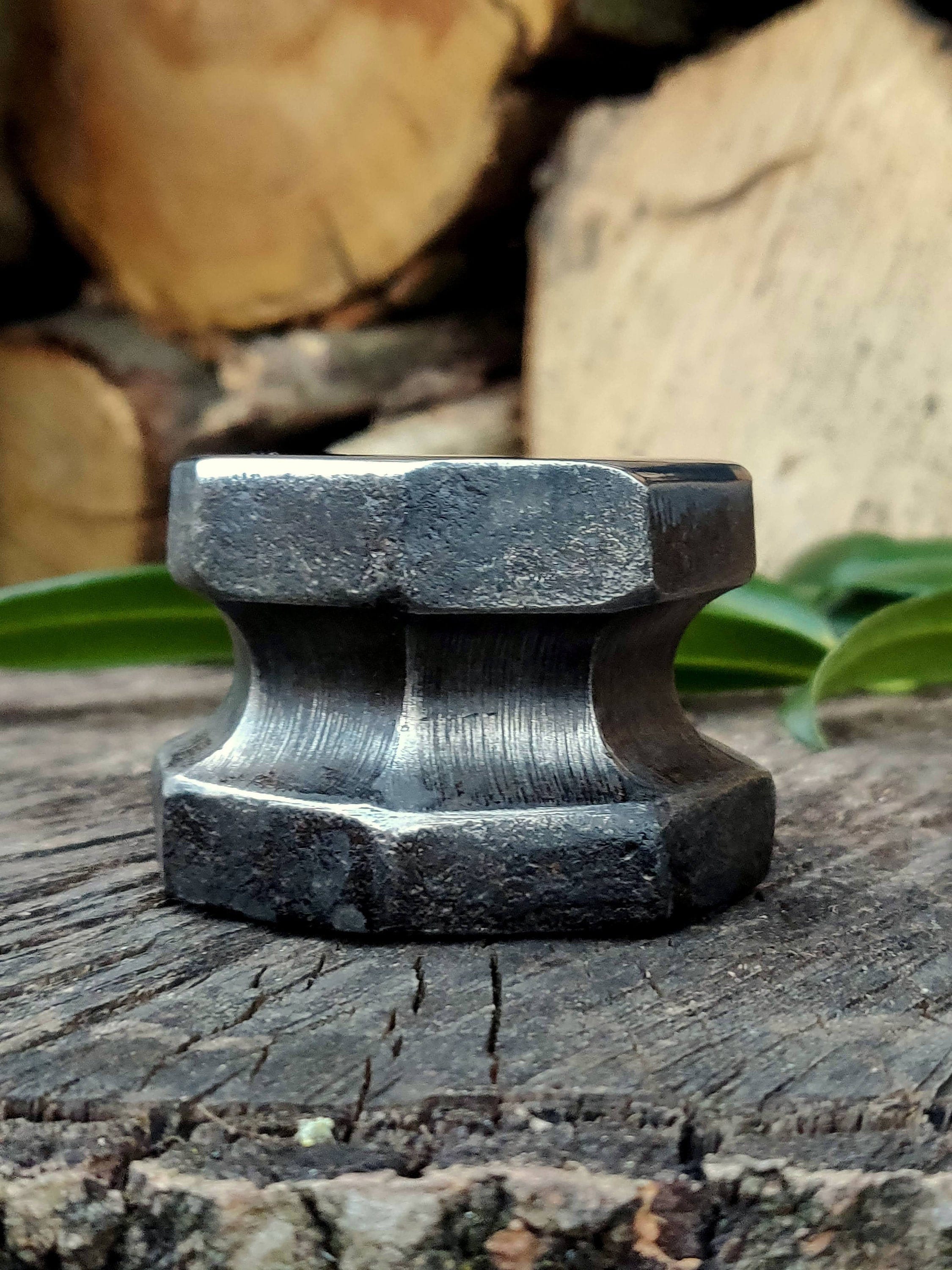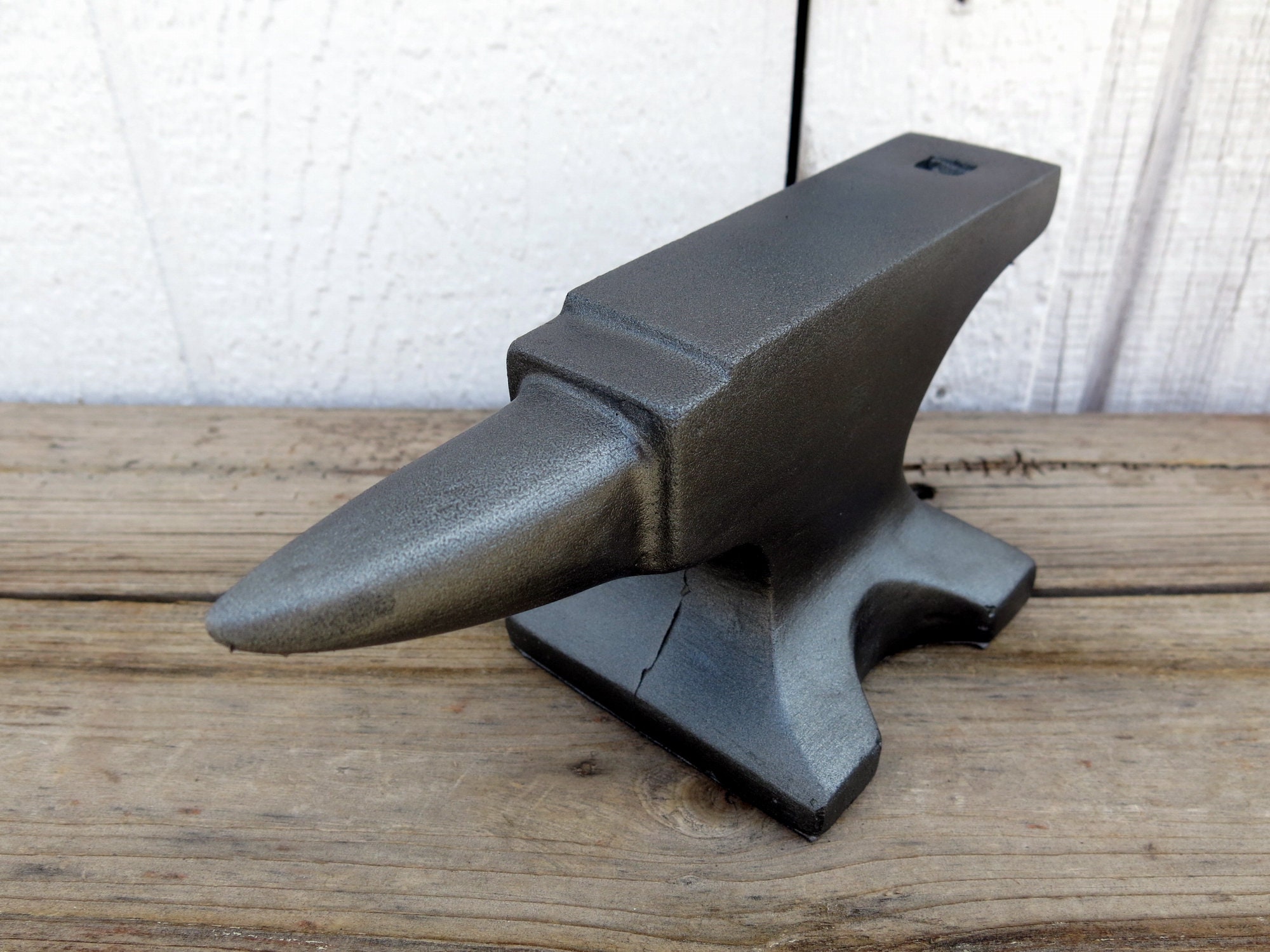

Common methods of attaching an anvil are spikes, chains, steel or iron straps, clips, bolts where there are holes provided, and cables. A loose anvil is extremely unsafe, as it can fall off the base and is an ineffective forging tool. It requires being fastened firmly to the base, so it will not move when struck with a hammer. At times, smiths will fit a second tool to this hole to allow the smith more flexibility when using more than one anvil tool.Īn anvil needs to be placed upon a sturdy base made from an impact and fire resistant material. The pritchel hole is a small round hole that is present on most modern anvils. It is also used in punching and bending operations. The hardie hole is a square hole into which specialized forming and cutting tools, called Hardy tools, are placed. It is soft and is used for cutting its purpose is to prevent damaging the steel face of the anvil by conducting such operations there and so as not to damage the cutting edge of the chisel, though many smiths shun this practice as it will damage the anvil over time. The step is that area of the anvil between the "horn" and the "face". Also, some anvils are made with side horns or clips for specialized work. Some anvils, mainly European, are made with two horns, one square and one round. It also is used by some smiths as an aid in "drawing down" stock (making it longer and thinner). The horn is used mostly in bending operations. The horn of the anvil is a conical projection used to form various round shapes and is generally unhardened steel or iron.
ANTIQUE ANVILS FOR SALE FULL
Hammers, tools, and work pieces of hardened steel should never directly strike the anvil face with full force, as they may damage it this can result in chipping or deforming of the anvil face. A hard anvil face also reduces the amount of force lost in each hammer blow. The face is hardened and tempered to resist the blows of the smith's hammer, so the anvil face does not deform under repeated use. Also, sharp edges tend to cut into the metal being worked and may cause cracks to form in the workpiece. Any marks on the face will be transferred to the work. It is generally made of hardened steel and should be flat and smooth with rounded edges for most work. The primary work surface of the anvil is known as the face.

They have even found their way into popular culture including episodes of Looney Tunes, the name of a heavy metal band, and usage by artisanal blacksmiths as well as jewelers and metal smiths. Inexpensive anvils have been made of cast iron and low quality steel, but are considered unsuitable for serious use as they deform and lack rebound when struck.īecause anvils are very ancient tools and were at one time very commonplace, they have acquired symbolic meaning beyond their use as utilitarian objects. The great majority of modern anvils are made of cast or forged steel (the latter is stronger) that has been heat treated. Before the advent of modern welding technology, it was a primary tool of metal workers. In most cases the anvil is used as a forging tool.

On a quality anvil, the smith's hammer should rebound with almost as much energy as the smith puts into the downward stroke, ultimately making the smith's job easier and less physically strenuous.

An anvil is a metalworking tool consisting of a large block of metal (usually forged or cast steel), with a flattened top surface, upon which another object is struck (or "worked").Īnvils are as massive as they are practical, because the higher their inertia, the more efficiently they cause the energy of striking tools to be transferred to the work piece.


 0 kommentar(er)
0 kommentar(er)
